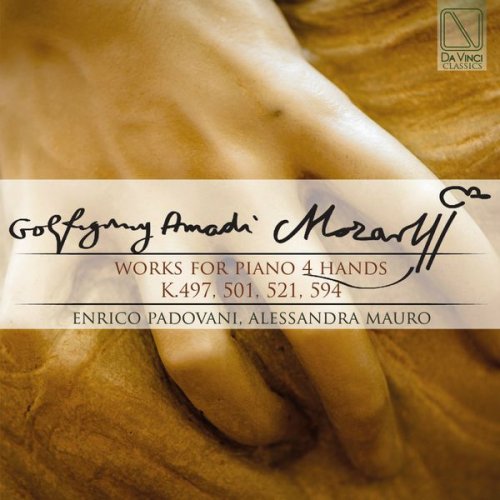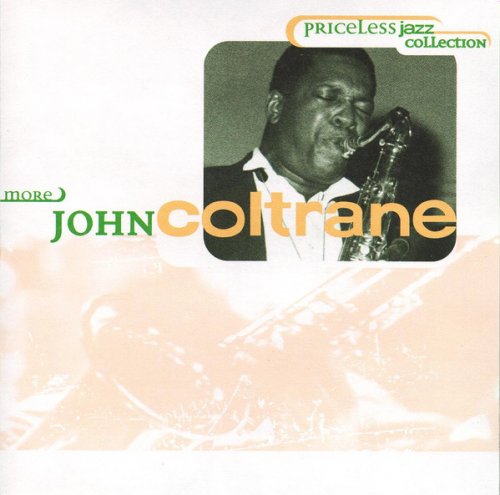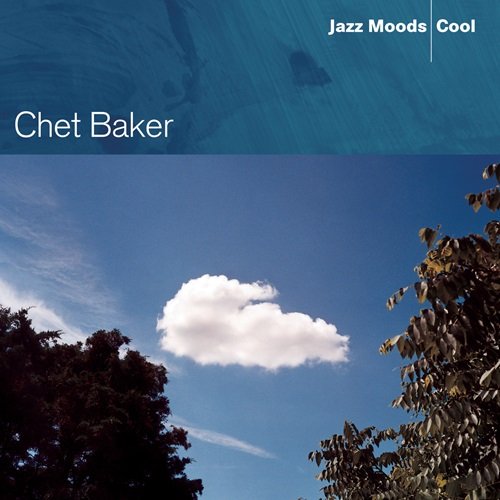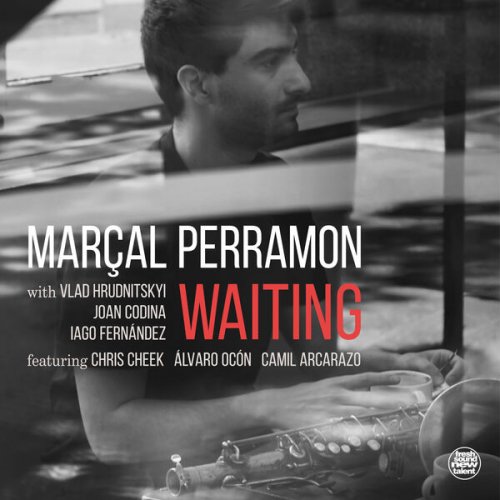Enrico Padovani & Alessandra Mauro - Wolfgang Amadeus Mozart: Works for Piano 4 Hands (2017)

Artist: Enrico Padovani, Alessandra Mauro
Title: Wolfgang Amadeus Mozart: Works for Piano 4 Hands
Year Of Release: 2017
Label: Da Vinci Classics
Genre: Classical
Quality: FLAC (tracks)
Total Time: 1:07:16
Total Size: 190 MB
WebSite: Album Preview
Tracklist:Title: Wolfgang Amadeus Mozart: Works for Piano 4 Hands
Year Of Release: 2017
Label: Da Vinci Classics
Genre: Classical
Quality: FLAC (tracks)
Total Time: 1:07:16
Total Size: 190 MB
WebSite: Album Preview
1. Enrico Padovani & Alessandra Mauro – Sonata for Piano Four-Hands in C Major, K. 521: I. Allegro (09:12)
2. Enrico Padovani & Alessandra Mauro – Sonata for Piano Four-Hands in C Major, K. 521: II. Andante (06:51)
3. Enrico Padovani & Alessandra Mauro – Sonata for Piano Four-Hands in C Major, K. 521: III. Allegretto (08:34)
4. Enrico Padovani & Alessandra Mauro – Andante and Variations in G Major, K. 501 (07:31)
5. Enrico Padovani & Alessandra Mauro – Adagio and Allegro in F Minor, K. 594 (Originally for Mechanical Organ Transcribed by Wolfgang Amadeus Mozart) (09:08)
6. Enrico Padovani & Alessandra Mauro – Sonata for Piano Four-Hands in F Major, K. 497: I. Adagio - Allegro di molto (09:25)
7. Enrico Padovani & Alessandra Mauro – Sonata for Piano Four-Hands in F Major, K. 497: II. Andante (08:16)
8. Enrico Padovani & Alessandra Mauro – Sonata for Piano Four-Hands in F Major, K. 497: III. Allegro (08:16)
In the history of reception and interpretation of piano music, Wolfgang Amadeus Mozart’s work (1756-1791) is one of the most troublesome for interpreters of every time and place. The reception of this music is inevitably intertwined with national music stories, the development of “indigenous” schools, the “historical” sensitivity of each culture (Italian, French, German, etc.). The hermeneutic tradition teaches us that this is the result of the intersection between different dimensions: time distance (Zeitenabstand), story of effects (Wirkungsgeschichte), consciousness of historical determination (Wirkungsgeschichte Bewusstsein) and fusion between different horizons (Horizontvermelschung). In this general framework it lies the specificity of reception and interpretation of the Mozartian piano production, that we can generally consider as characterized by two great orientations. The first is marked by a preference for the philological approach, whereby a certain degree of attention to the historical-cultural location of the work and its formal peculiarities leads to an interpretation that appears more rigorous, but is likely to be stiffened.




![Frank Sinatra, Count Basie - It Might As Well Be Swing (1964) [2021 SACD] Frank Sinatra, Count Basie - It Might As Well Be Swing (1964) [2021 SACD]](https://www.dibpic.com/uploads/posts/2025-12/1766090910_scan-1.jpeg)

![The Mood Mosaic - Soul Seduction (2025) [Hi-Res] The Mood Mosaic - Soul Seduction (2025) [Hi-Res]](https://www.dibpic.com/uploads/posts/2025-12/1766135288_d5rmbmuwqtmya_600.jpg)

![Bryan Ferry - Bitter-Sweet (2018) [Hi-Res] Bryan Ferry - Bitter-Sweet (2018) [Hi-Res]](https://www.dibpic.com/uploads/posts/2018-11/1543491501_folder.jpg)